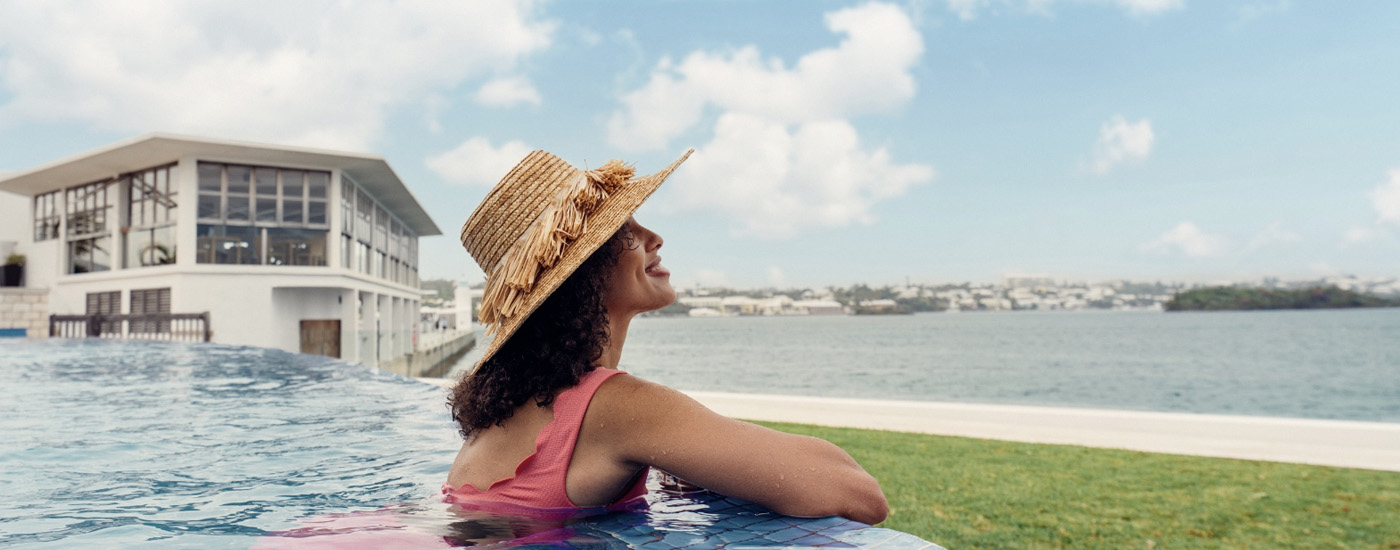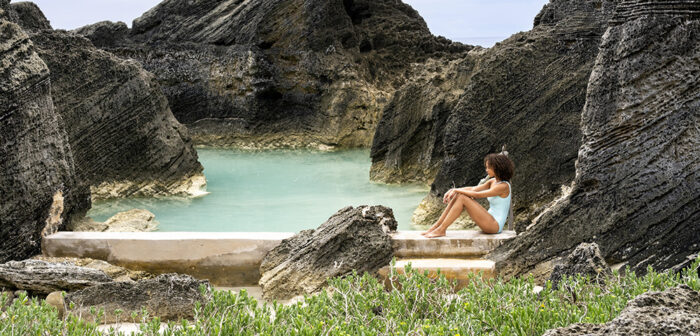An Insider’s View
An insider’s view of Bermudas dining gems & local attractions, put together for you by our resort staff.
Things to do in Bermuda
Dining and Nightlife
Website
Local Attractions
Bermuda Underwater Exploration Institute (BUEI)
Website (441) 292-7219
The exhibits are designed to acquaint the visitor with the mysteries of the ocean, the latest research and creatures of the deep.
Botanical Gardens, Paget
Website (441) 236-5732
The official residence of Bermuda’s Premier. The largest local public garden by far. A mix of park, woodland, greenhouses, agricultural buildings and horticultural collections. Chiefly of interest for its trees, orchard, collection of orchids and Camden. Visitors should expect a fair amount of walking.
Crystal Caves/Fantasy Caves
Website (441) 293-0640
The Crystal Caves and Fantasy Caves in Hamilton Parish are known for its natural limestone cave formations. Guides will escort you, mainly to ensure that you do not touch the formations. The caves are named for their subterranean pools of incredibly clear water. If you look down, you’ll see the bottom, 55 feet below, through incredibly clear turquoise waters. Located at Wilkinson Avenue. NB: They will hold your luggage at no fee if you wish to make this the last stop of your trip before leaving Paradise.
Dolphin Quest
Website 1 (800) 248 3316
Get happily lost in a Bermuda Triangle of fun, swimming with our beautiful dolphins in their ocean water safe haven within the old stone fortress now home to the National Museum of Bermuda, one of the world’s most extraordinary naval history museums. Create a magical multi-sensory connection when you touch a dolphin that will touch your heart. Dolphin Quest Bermuda is located at The Royal Naval Dockyard, Bermuda’s premier shopping, dining and entertainment destination and cruise ship terminal, and just a short, scenic ferry ride or taxi ride from anywhere on the island. You’ll share and remember your dolphin moments and your biggest and best smiles ever with our fantastic keepsake photos.
Historical British Forts
Bermuda has dozens of historic forts still standing. They are superb cultural, historical and scenic attractions in every way. The largest concentration is in St. George’s, which has been proclaimed World Heritage Treasure by United Nations Educational, Scientific & Cultural Organization (UNESCO).
Fort Hamilton
Construction of this famous fort began in 1868, by order of the Duke of Wellington. Originally intended to protect Hamilton Harbour from an American invasion, the fort was already considered outdated before its completion in the 1870s. Outfitted with a moat, underground passageways, and 18-ton guns, Fort Hamilton has since been transformed into a lovely park filled with gardens. In summer, stop by at noon to watch the kilted Bermuda Isles Pipe Band perform a traditional bagpiping, or skirling, ceremony.
Destination Dockyard Festival
Destination Dockyard is a festive celebration held every Monday evening at Bermuda’s Royal Naval Dockyard (Kings Wharf area). It is generally held in the summer months starting in June. If you are starting from city of Hamilton, you can take a ferry. There is a direct ferry service to the dockyard from Hamilton city and during summer time from St. George. The celebration at the dockyard is packed with fun-filled activities. As you step into the dockyard, you will find hundreds of vendors displaying local art and craft work, many selling local sea food and cold drinks. There are musicians, dancers and other entertainers adding to the festive atmosphere. You can see Bermuda’s famous Gombey dancing here. The Gombey dancers and drummers reflect Bermuda’s African, Native American and British colonial heritage as they dance to lively rhythms wearing vibrant costumes.
The Town of Hamilton
The town center of Bermuda’s capital city is only a 5-minute walk from Hamilton Princess & Beach Club. Hamilton Harbour is one of the most beautiful in the world, and boasts a number of attractions for tourists and natives alike. Be sure to visit the excellent shopping on Front and Reid Streets for a wide selection of jewelery, clothing, designer handbags and more. History-loving guests will enjoy the wide array of historical pastel-colored buildings. Enjoy restaurants offering everything from local cuisine to the finest sushi. On any Monday to Friday, you may see Bermuda’s businessmen in their traditional work attire of Bermuda shorts and blazers—introduced by the military, this look was adopted by Bermudians as a perfect solution to remaining cool while conducting business in warmer climates. For a glimpse of local art, head to The Bermuda National Gallery located in City Hall and don’t miss the Museum of the Bermuda Historical Society, which features 17th century artifacts and furniture.
Harbour Nights Festival
On Wednesday evenings from April to August, visitors turn out for Harbour Nights on Front Street. The festival is fun for the entire family and offers participants an opportunity to dance in the streets, try fish chowder and take home souvenirs handcrafted by local artists. Weather permitting.
Gibbs Hill Light House
Website
The lighthouse is built next to the Signal Station on Gibb’s Hill, originally operated by the British Army. Oddly enough, the house occupied as the Signal Station was owned by a family of seafaring men who sailed through the dangerous reefs back in the 1700’s without benefit of the warning light which now bears the family name. The hill on which the lighthouse stands is 245 feet high, while the structure itself measures 117 feet from base to light.
Its beam of light runs 362 feet above sea level. Ships 40 miles away can see it. Its flash can be spotted by planes flying 10,000 feet 120 miles away, while the light itself can be seen on the horizon which is about 26 miles distant. In 1985 60,000 Visitors climbed to the top of the lighthouse by means of eight flights – a total of 185 steps. The Light is now supplied by a 1.000-watt electric bulb which is located in the center of the lens. The lens, which revolves around the light in a trough containing 1,200 pounds of mercury (this system was finally replaced with a new mercury free system after Hurricane Fabian in 2004), weights two and three quarter-tons. Consisting of a series of concentric prisms, the present lens is capable of building the light up to a half million candle power The lens makes a complete revolution once every 50 seconds. This means a flash of two seconds duration at every ten-second interval.
St. George’s
St. George’s (formally, the Town of St. George, or St. George’s Town), located on the island and within the parish of the same names, settled in 1612, was the first permanent English settlement on the islands of Bermuda. It is often described as the third successful English settlement in the Americas, after St. John’s, Newfoundland, and Jamestown, Virginia.
This small town was the capital of Bermuda until 1815; it was linked to the history of colonial America. Ten thousand Bermudians emigrated, primarily to Virginia and the American Southeast, before United States independence made them citizens of separate nations. Branches of wealthy Bermudian merchant families dominated trade in the area’s ports. Bermudians settled towns in the South, and contributed greatly to the make up of the populations of several US states. The town has numerous historical sites, such as the old State House from 1620. Other than fortifications, this was the first stone building in Bermuda, built to house the Parliament. It is the oldest building on the island. Others of note are the Unfinished Church, the Old Rectory, St. Peter’s (the oldest surviving Anglican and oldest continuously occupied Protestant church in the Western hemisphere), the Tucker House, the Bermuda National Trust Museum, and the St. George’s Historical Society Museum and the Featherbed Alley Printshop museum.

